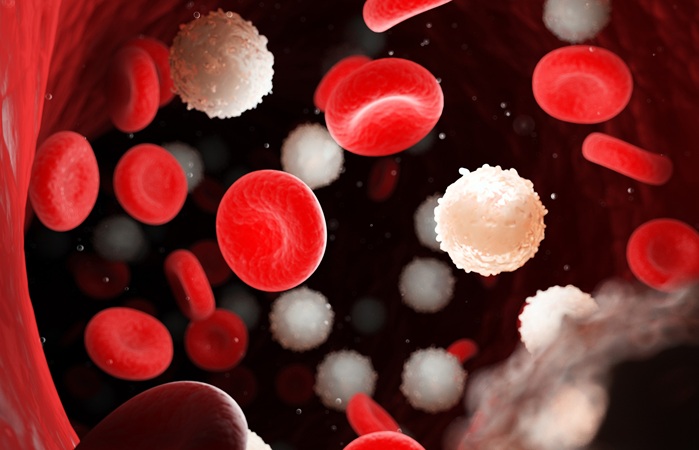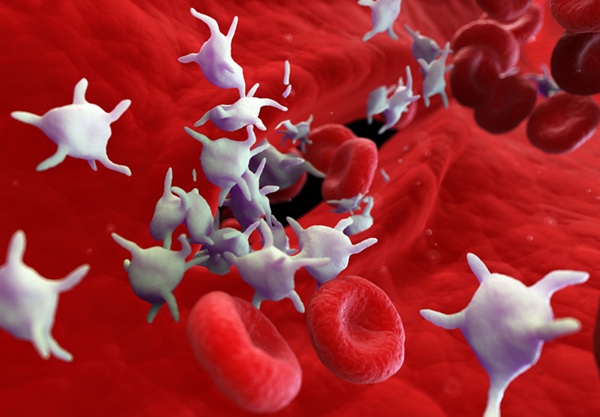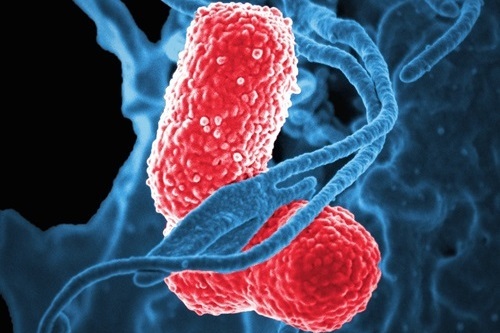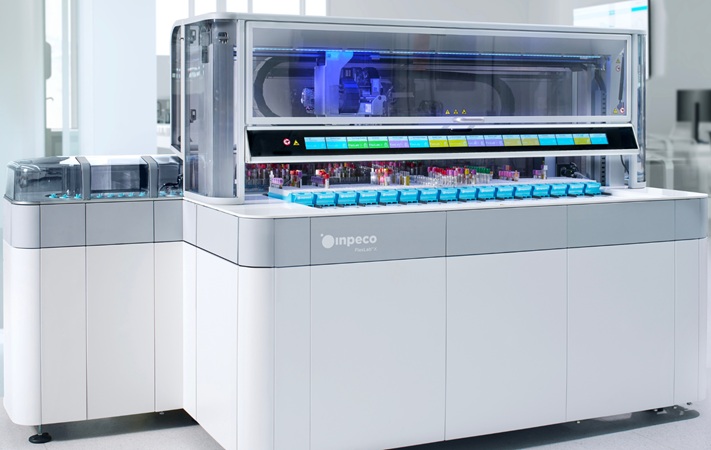New Biomarker Panel Could Accelerate Autism Diagnoses
|
By LabMedica International staff writers Posted on 17 Sep 2018 |

Image: An Agilent 1290 ultra-high performance liquid chromatograph (UHPLC) coupled to an Agilent G6490 Triple Quadrupole Mass Spectrometer (Photo courtesy of Agilent Technologies).
Autism Spectrum Disorder is characterized by core symptoms of altered social communication and repetitive behaviors or circumscribed interests and has a prevalence of 1:59 children in the USA. Affected individuals vary enormously in the severity of their autistic characteristics as well as in the occurrence of many co-morbid conditions.
No biomarker tests for autism spectrum disorder (ASD) currently exist. Children are diagnosed based on their altered behaviors, which may not become evident until children are two to four years old. Families often must wait over a year or more for an appointment with a specialist, delaying diagnosis even further.
A team of scientists working with those at the University of California Davis (Davis, CA, USA) recruited children, ages 18 to 48 months, from eight centers across the USA. Each participant underwent physical, neurological and behavioral examinations. Metadata was obtained about the children's birth, developmental, medical and immunization histories, dietary supplements and medications. Parents’ medical histories were also obtained. Blood was collected from subjects after at least a 12 hour fast by venipuncture into 6 mL sodium heparin tubes on wet ice.
The investigators used the Waters AccQTag Ultra kit, which employs derivatization of amine moieties with 6-aminoquinolyl-N-hydroxysuccinimidyl carbamate and was employed for all samples prior to multiple reaction monitoring (MRM) on a liquid chromatography (LC) mass spectrometry (MS) system consisting of an Agilent 1290 ultra-high performance liquid chromatograph (UHPLC) coupled to an Agilent G6490 Triple Quadrupole Mass Spectrometer.
The team compared blood metabolites, specifically, amino acids, in 516 children with ASD and 164 children showing typical development. They found that 17% of the ASD children had unique concentrations of specific amino acids, known as metabotypes, in their blood. Though a 17% subgroup may seem small, it is actually quite significant. The combination of glutamine, glycine, and ornithine Amino Acid Dysregulation Metabotypes (AADMs) identified a dysregulation in amino acid/ branch chain amino acid (AA/BCAA) metabolism that is present in 16.7% of the ASD subjects and is detectable with a specificity of 96.3% and a positive predictive value (PPV) of 93.5%.
The author demonstrates one approach to analyzing the metabolism of ASD to successfully identify reproducible metabotypes. Analysis of the study samples is ongoing and there will be additional metabotypes, which will be diagnostic for subsets of children with ASD. Stratifying ASD based on metabotypes offers an opportunity to identify efficacious interventions within metabotypes that can lead to more precise and individualized treatment.
David G. Amaral, PhD, a professor of psychiatry and lead investigator of the study, said, “With this panel of alterations in amino acid metabolism, we can detect about 17% of kids with ASD. This is the first of hopefully many panels that will identify other subsets of kids with autism.” The study was published on September 6, 2018, in the journal Biological Psychiatry.
Related Links:
University of California Davis
No biomarker tests for autism spectrum disorder (ASD) currently exist. Children are diagnosed based on their altered behaviors, which may not become evident until children are two to four years old. Families often must wait over a year or more for an appointment with a specialist, delaying diagnosis even further.
A team of scientists working with those at the University of California Davis (Davis, CA, USA) recruited children, ages 18 to 48 months, from eight centers across the USA. Each participant underwent physical, neurological and behavioral examinations. Metadata was obtained about the children's birth, developmental, medical and immunization histories, dietary supplements and medications. Parents’ medical histories were also obtained. Blood was collected from subjects after at least a 12 hour fast by venipuncture into 6 mL sodium heparin tubes on wet ice.
The investigators used the Waters AccQTag Ultra kit, which employs derivatization of amine moieties with 6-aminoquinolyl-N-hydroxysuccinimidyl carbamate and was employed for all samples prior to multiple reaction monitoring (MRM) on a liquid chromatography (LC) mass spectrometry (MS) system consisting of an Agilent 1290 ultra-high performance liquid chromatograph (UHPLC) coupled to an Agilent G6490 Triple Quadrupole Mass Spectrometer.
The team compared blood metabolites, specifically, amino acids, in 516 children with ASD and 164 children showing typical development. They found that 17% of the ASD children had unique concentrations of specific amino acids, known as metabotypes, in their blood. Though a 17% subgroup may seem small, it is actually quite significant. The combination of glutamine, glycine, and ornithine Amino Acid Dysregulation Metabotypes (AADMs) identified a dysregulation in amino acid/ branch chain amino acid (AA/BCAA) metabolism that is present in 16.7% of the ASD subjects and is detectable with a specificity of 96.3% and a positive predictive value (PPV) of 93.5%.
The author demonstrates one approach to analyzing the metabolism of ASD to successfully identify reproducible metabotypes. Analysis of the study samples is ongoing and there will be additional metabotypes, which will be diagnostic for subsets of children with ASD. Stratifying ASD based on metabotypes offers an opportunity to identify efficacious interventions within metabotypes that can lead to more precise and individualized treatment.
David G. Amaral, PhD, a professor of psychiatry and lead investigator of the study, said, “With this panel of alterations in amino acid metabolism, we can detect about 17% of kids with ASD. This is the first of hopefully many panels that will identify other subsets of kids with autism.” The study was published on September 6, 2018, in the journal Biological Psychiatry.
Related Links:
University of California Davis
Latest Clinical Chem. News
- Carbon Nanotubes Help Build Highly Accurate Sensors for Continuous Health Monitoring
- Paper-Based Device Boosts HIV Test Accuracy from Dried Blood Samples
- AI-Powered Raman Spectroscopy Method Enables Rapid Drug Detection in Blood
- Novel LC-MS/MS Assay Detects Low Creatinine in Sweat and Saliva
- Biosensing Technology Breakthrough Paves Way for New Methods of Early Disease Detection
- New Saliva Test Rapidly Identifies Paracetamol Overdose
- POC Saliva Testing Device Predicts Heart Failure in 15 Minutes

- Screening Tool Detects Multiple Health Conditions from Single Blood Drop
- Integrated Chemistry and Immunoassay Analyzer with Extensive Assay Menu Offers Flexibility, Scalability and Data Commutability
- Rapid Drug Test to Improve Treatment for Patients Presenting to Hospital
- AI Model Detects Cancer at Lightning Speed through Sugar Analyses
- First-Ever Blood-Powered Chip Offers Real-Time Health Monitoring
- New ADLM Guidance Provides Expert Recommendations on Clinical Testing For Respiratory Viral Infections
- 3D Printed Point-Of-Care Mass Spectrometer Outperforms State-Of-The-Art Models
- POC Biomedical Test Spins Water Droplet Using Sound Waves for Cancer Detection
- Highly Reliable Cell-Based Assay Enables Accurate Diagnosis of Endocrine Diseases
Channels
Molecular Diagnostics
view channel
D-Dimer Testing Can Identify Patients at Higher Risk of Pulmonary Embolism
Pulmonary embolism (PE) is a commonly suspected condition in emergency departments (EDs) and can be life-threatening if not diagnosed correctly. Achieving an accurate diagnosis is vital for providing effective... Read more
New Biomarkers to Improve Early Detection and Monitoring of Kidney Injury
Drug-induced kidney injury, also known as nephrotoxicity, is a prevalent issue in clinical practice, occurring when specific medications at certain doses cause damage to the kidneys. Nephrotoxicity can... Read moreHematology
view channel
New Scoring System Predicts Risk of Developing Cancer from Common Blood Disorder
Clonal cytopenia of undetermined significance (CCUS) is a blood disorder commonly found in older adults, characterized by mutations in blood cells and a low blood count, but without any obvious cause or... Read more
Non-Invasive Prenatal Test for Fetal RhD Status Demonstrates 100% Accuracy
In the United States, approximately 15% of pregnant individuals are RhD-negative. However, in about 40% of these cases, the fetus is also RhD-negative, making the administration of RhoGAM unnecessary.... Read moreImmunology
view channel
Post-Treatment Blood Test Could Inform Future Cancer Therapy Decisions
In the ongoing advancement of personalized medicine, a new study has provided evidence supporting the use of a tool that detects cancer-derived molecules in the blood of lung cancer patients years after... Read more
Cerebrospinal Fluid Test Predicts Dangerous Side Effect of Cancer Treatment
In recent years, cancer immunotherapy has emerged as a promising approach where the patient's immune system is harnessed to fight cancer. One form of immunotherapy, called CAR-T-cell therapy, involves... Read more
New Test Measures Preterm Infant Immunity Using Only Two Drops of Blood
Preterm infants are particularly vulnerable due to their organs still undergoing development, which can lead to difficulties in breathing, eating, and regulating body temperature. This is especially true... Read more
Simple Blood Test Could Help Choose Better Treatments for Patients with Recurrent Endometrial Cancer
Endometrial cancer, which develops in the lining of the uterus, is the most prevalent gynecologic cancer in the United States, affecting over 66,000 women annually. Projections indicate that in 2025, around... Read moreMicrobiology
view channel
Breakthrough Diagnostic Technology Identifies Bacterial Infections with Almost 100% Accuracy within Three Hours
Rapid and precise identification of pathogenic microbes in patient samples is essential for the effective treatment of acute infectious diseases, such as sepsis. The fluorescence in situ hybridization... Read more
Innovative ID/AST System to Help Diagnose Infectious Diseases and Combat AMR
Each year, 11 million people across the world die of sepsis out of which 1.3 million deaths are due to antibiotic-resistant bacteria. The burden of antimicrobial resistance (AMR) continues to weigh heavily,... Read more
Gastrointestinal Panel Delivers Rapid Detection of Five Common Bacterial Pathogens for Outpatient Use
Acute infectious gastroenteritis results in approximately 179 million cases each year in the United States, leading to a significant number of outpatient visits and hospitalizations. To address this, a... Read morePathology
view channel
AI Model Predicts Patient Response to Bladder Cancer Treatment
Each year in the United States, around 81,000 new cases of bladder cancer are diagnosed, leading to approximately 17,000 deaths annually. Muscle-invasive bladder cancer (MIBC) is a severe form of bladder... Read more
New Laser-Based Method to Accelerate Cancer Diagnosis
Researchers have developed a method to improve cancer diagnostics and other diseases. Collagen, a key structural protein, plays various roles in cell activity. A novel multidisciplinary study published... Read more
New AI Model Predicts Gene Variants’ Effects on Specific Diseases
In recent years, artificial intelligence (AI) has greatly enhanced our ability to identify a vast number of genetic variants in increasingly larger populations. However, up to half of these variants are... Read more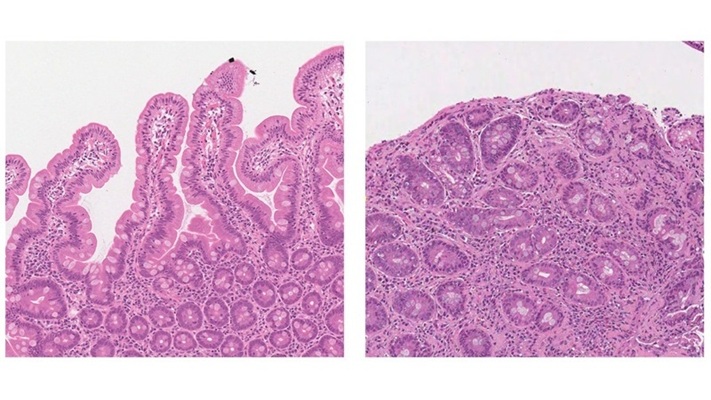
Powerful AI Tool Diagnoses Coeliac Disease from Biopsy Images with Over 97% Accuracy
Coeliac disease is an autoimmune disorder triggered by the consumption of gluten, causing symptoms such as stomach cramps, diarrhea, skin rashes, weight loss, fatigue, and anemia. Due to the wide variation... Read moreTechnology
view channel
Smartphones Could Diagnose Diseases Using Infrared Scans
Rapid advancements in technology may soon make it possible for individuals to bypass invasive medical procedures by simply uploading a screenshot of their lab results from their phone directly to their doctor.... Read more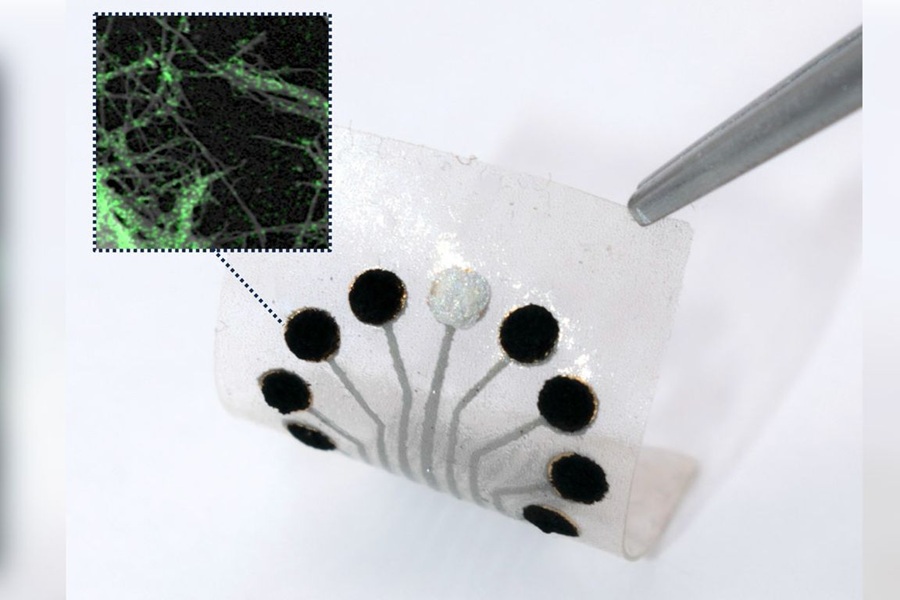
Novel Sensor Technology to Enable Early Diagnoses of Metabolic and Cardiovascular Disorders
Metabolites are critical compounds that fuel life's essential functions, playing a key role in producing energy, regulating cellular activities, and maintaining the balance of bodily systems.... Read more
3D Printing Breakthrough Enables Large Scale Development of Tiny Microfluidic Devices
Microfluidic devices are diagnostic systems capable of analyzing small volumes of materials with precision and speed. These devices are used in a variety of applications, including cancer cell analysis,... Read moreIndustry
view channel













